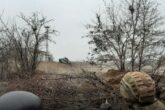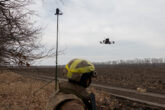March 25, 2025
Awful but Lawful: China’s Australia Flotilla
Australians were recently given a wake-up call to China’s burgeoning blue-water naval capabilities, as a Chinese naval task force conducted multiple unannounced live-fire exercises in the seas between Australia and New Zealand, and then essentially circumnavigated the continent on their way home.
While defence analysts have warned for some time about the growing reach of the Chinese military and its potential threat to Australia’s security interests, this experience nevertheless seems to have caused a fair bit of surprise and consternation. And it raises key questions: was this deployment and its exercises a real advance for the Chinese navy? What kind of challenge was it to Australia’s national security? And what should be done about it?
As such, this was not a demonstration of Chinese freedom of navigation. It was a show of force.
On the first question, the clear answer for those who have been watching the development of Chinese naval power is a firm “no”. The PLA Navy is now the largest in the world by ship count and is well-equipped with advanced blue-water warships, plus the auxiliary ships needed to keep them at sea far from home. It has maintained naval task forces on a continuous basis outside the Pacific for fifteen years, and has sporadically deployed task forces far from home to places like the Baltic Sea and Alaskan waters. China is now, by far, the world’s dominant maritime power by every measure other than sheer naval tonnage (US Navy ships are, on average, still larger), and its maritime interests are global in nature. That we also see global Chinese naval power should come as no surprise.
Next, what was the nature of the challenge that China posed with its operations in the Tasman Sea? What it was not was a legal challenge. Under international law, the Chinese naval task force was fully entitled to conduct military operations — including live-fire exercises — on the high seas between Australia and New Zealand, no matter how uncomfortable it might make both countries feel. Such a right for state vessels to operate freely also exists within nations’ exclusive economic zones (EEZs), though some seem confused on this point — including China, which regularly interferes with foreign air and naval operations within its EEZ.
Read the full article on The Interpreter.
More from CNAS
-
Defense / Transatlantic Security
When Defense Becomes Destruction: Austria-Hungary’s Mistake and Ukraine’s RiskThis article was originally posted on War on the Rocks. The southeastern Polish city of Przemyśl, with its elegant 19th century Habsburg-era train station, remains one of the ...
By Franz-Stefan Gady
-
Defense / Transatlantic Security
Ukraine’s Catch-22 MomentThis article was originally published in the Financial Times. In Joseph Heller’s wartime classic, Catch-22, the protagonist Yossarian seeks out the US army surgeon Doc Daneeka...
By Franz-Stefan Gady
-
CNAS Insights | Budgetary Own Goals Undermine “Speed and Volume”
On November 7, Secretary of Defense Pete Hegseth laid out a plan to overhaul the Department of Defense’s (DOD’s) acquisition system. Placing an emphasis on delivering new capa...
By Philip Sheers, Carlton Haelig & Stacie Pettyjohn
-
Drones: Who Is Making the New Weapons of War?
From Ukraine and Russia to Gaza and Sudan, drones have become a key weapon of war. Which companies are making them, and profiting from this rapidly expanding but controversial...
By Stacie Pettyjohn




